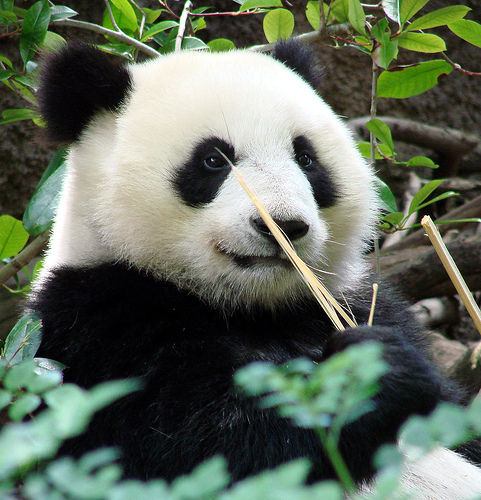Top 10 most endangered animals in China
 Giant Panda
Giant Panda
Giant Pandasare black and white bears that live in temperate-zone bamboo forests in central-western and south-western China. They are considered to be one of the best recognized animals, but are rarest animals to find around the world. Currently, they have come to be the symbol of the endangered species and there are many efforts to conserve Giant Pandas.
Status:
The Giant Panda is listed as endangered species by the International Union for Conservation of Nature and Natural Resources (IUCN) in 1990. It is one of the most endangered species in the world. At present, best estimates put the total wild population at between 1,000–2,000 and more than 200 live in captivity.
Geographic Distribution:
Giant Pandas live in the mountain ranges in Sichuan, Shaanxi, and Gansu Provinces of Central China. They once lived in the lowland areas, but farming, forest clearing, and other human activities made giant pandas move to the mountains again.
You may not know:
A wild Giant Panda's diet is almost exclusively (99 percent) bamboo. The balance consists of other grasses and occasional small rodents or musk deer fawns. In zoos, Giant Pandas eat bamboo, sugar cane, rice gruel, a special high-fiber biscuit, carrots, apples, and sweet potatoes.
Adult Giant Pandas are generally solitary, but they do communicate periodically through scent marks, calls, and occasional meetings. The offspring stay with their mothers from one and a half to three years.
 0
0 








Go to Forum >>0 Comments